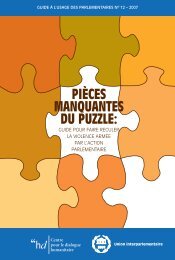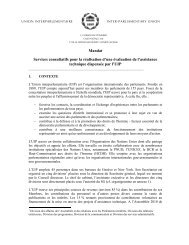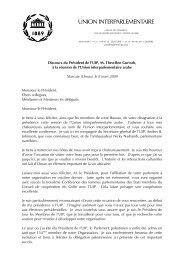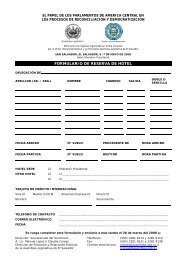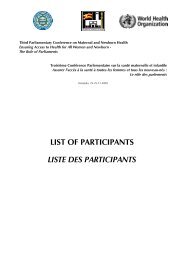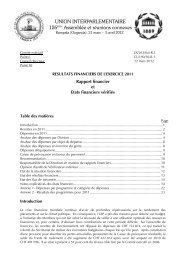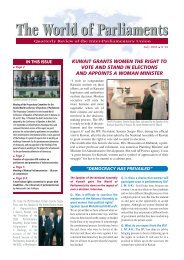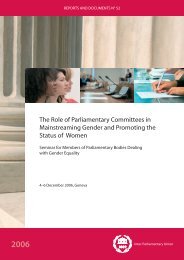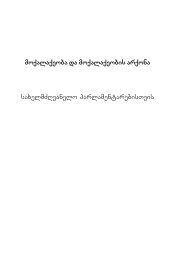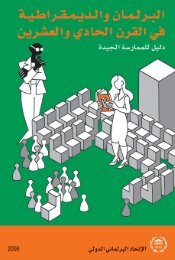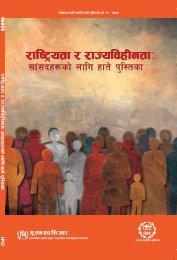MISSING PIECES - Inter-Parliamentary Union
MISSING PIECES - Inter-Parliamentary Union
MISSING PIECES - Inter-Parliamentary Union
Create successful ePaper yourself
Turn your PDF publications into a flip-book with our unique Google optimized e-Paper software.
<strong>MISSING</strong> <strong>PIECES</strong><br />
civilian access to firearms could well be that the proposal failed to address<br />
in parallel the improvement of law enforcement. The majority of the<br />
population felt that giving up their guns altogether would have left them<br />
vulnerable, fears that could perhaps have been alleviated by simultaneous<br />
reforms of the security sector. Even trained and well resourced law enforcement<br />
agencies need continuous training to adapt to changing realities,<br />
policies and patterns of violence. In Canada, while the national firearms<br />
legislation had been tightened, police officers acknowledge that adequate<br />
enforcement was hindered by inappropriate training and awareness by the<br />
police corps.<br />
INTERNATIONAL STANDARDS<br />
RELEVANCE TO THE UN PROGRAMME OF ACTION<br />
The justice and security sectors are not a particular focus of the PoA. When<br />
the security sector is mentioned, it is to urge the proper management of law<br />
enforcement weapons stockpiles 9 or to call for the exchange of experience<br />
and training among competent officials, including police and intelligence,<br />
to combat the illicit trade in small arms. 10 The PoA nonetheless encourages<br />
states and international and regional organisations to assist interested states<br />
in building their capacity in the area of law enforcement. 11<br />
A number of international instruments and standards provide mechanisms<br />
that can decrease firearm-related insecurity caused by police and other<br />
justice and security sector actors. Most prominent among them are the<br />
UN Code of Conduct for Law Enforcement Officials (UN Code of Conduct) 12 ,<br />
and the UN Basic Principles on the Use of Force and Firearms (UN Basic Principles)<br />
13 (see Annex 5 for other relevant provisions of international law).<br />
Adopted in 1979, the UN Code of Conduct outlines two key concepts<br />
that should govern the use of force and firearms by law enforcement officers:<br />
necessity and proportionality. It states that ‘[l]aw enforcement officials<br />
may use force only when strictly necessary and to the extent required for<br />
the performance of their duty’. The supporting commentary to the UN Code<br />
of Conduct indicates that such force should never be ‘disproportionate to<br />
the legitimate objective to be achieved’. 14<br />
Adopted in 1990, the voluntary UN Basic Principles were the product<br />
of distilled best practices and civil society input, especially from human<br />
rights advocates. Among the provisions of the UN Basic Principles are<br />
requirements for law enforcement officials to:<br />
126



